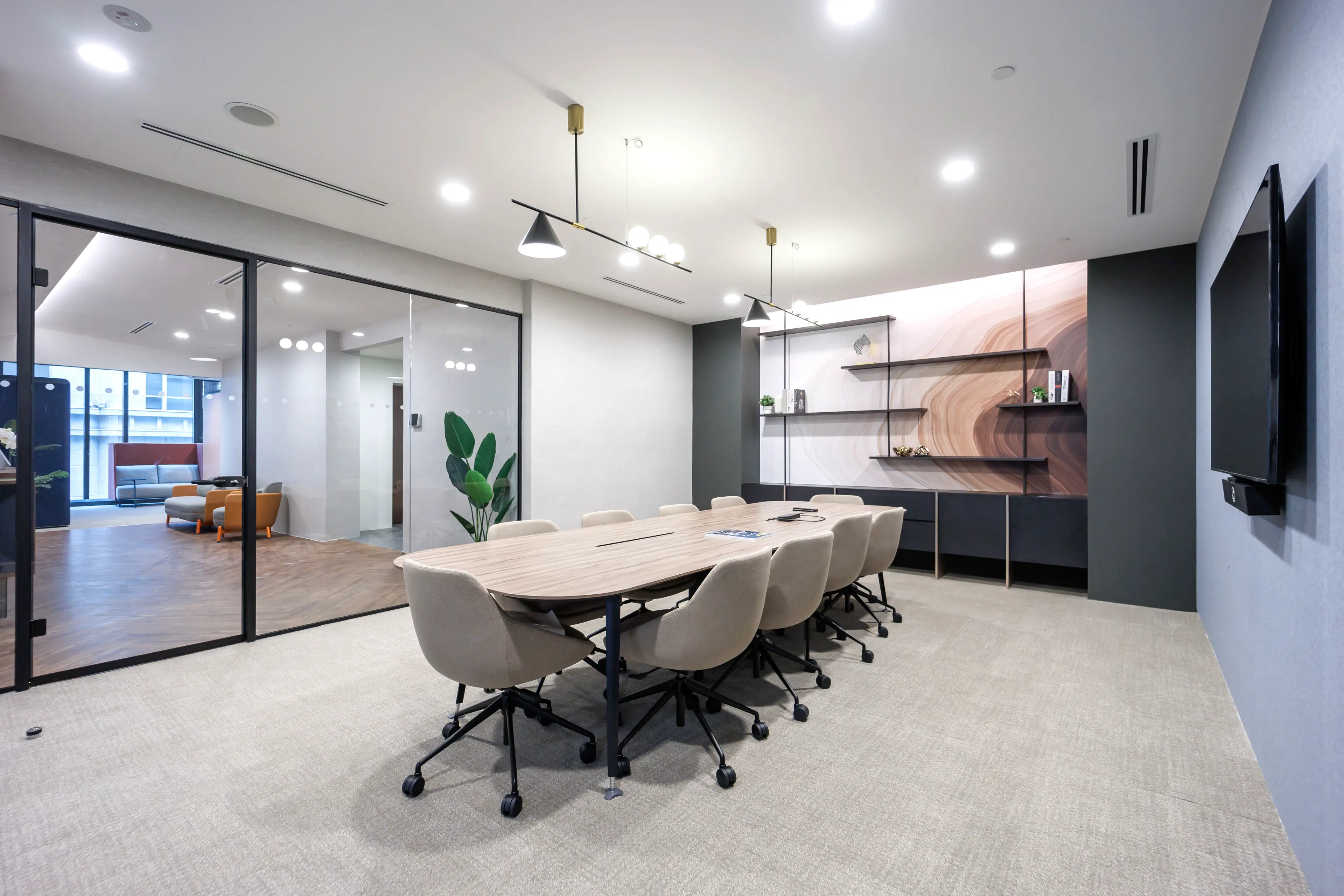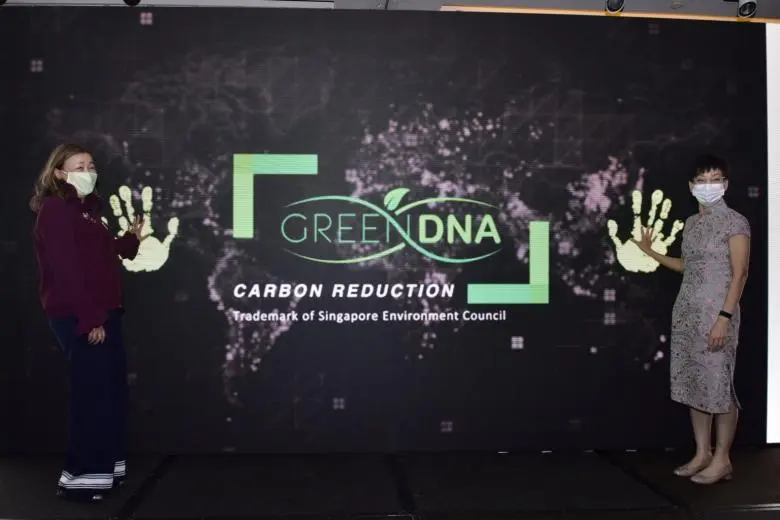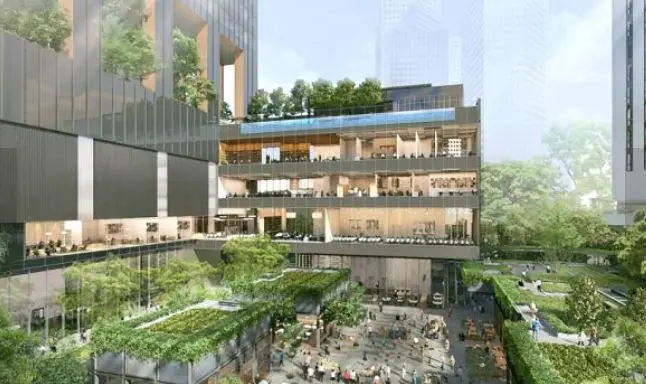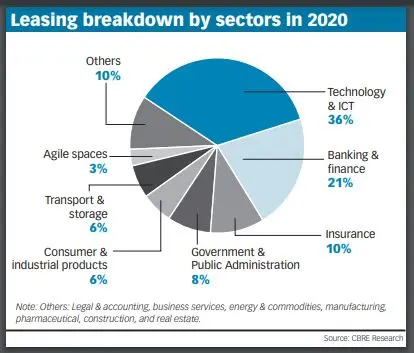
Media Features
Lianhe Zaobao
“Environmentally friendly furniture is too expensive, and cheap furniture is not environmentally friendly—a seemingly unsolvable problem, the local furniture brand Office Planner found a solution during the epidemic.” – Gavin Woo, OP Director
OP GreenDNA Carbon Reduction
SINGAPORE – Companies that adopted green practices to fight the climate crisis were awarded the GreenDNA Certificate, a new accreditation by the Singapore Environmental Council (SEC). The 12 recipients implemented environmentally friendly practices in their businesses, such as opting for recyclable products. Collectively, they committed to reduce carbon dioxide emissions by 10 per cent every year. “Our transition into a low-carbon economy and sustainable future is critical and requires collective efforts by the people, private and public sectors,” said Ms Grace Fu, Minister for Sustainability and the Environment of Singapore at the GreenDNA Certificate Launch and Awards Presentation Ceremony on Wednesday (Jan 13). The inaugural event was held at Grand Hyatt Singapore, one of the recipients. Some of its initiatives include using seafood from sustainable sources and donating leftover food to charities. “It’s great to get this kind of recognition that shows that in the long-run, these types of initiatives are what we should be doing,” said the hotel’s director of culinary operations, Mr Lucas Glanville, 52. Furniture manufacturing company Office Planner also received the certification. In 2010, the founder Mr Gavin Woo decided to use recyclable materials such as engineered wood to produce furniture. “This is a milestone in our journey that began many years ago,” said the 52-year-old. The other recipients were financial centre Arcadis Singapore, City Developments Limited, ComfortDelGro, DBS Bank, DTC World Corporation, Frasers Property, French Café Merci Marcel, building company Jim & Hall’s, Procter & Gamble, and SBS Transit. SEC Chairman Isabella Huang-Loh said she was heartened to see the companies of various sizes and different sectors take this “bold but necessary step.” “These 12 champions have come forward to demonstrate what they are doing to facilitate change,” she said. Last August, the SEC launched the GreenDNA programme to help organisations engage in sustainable practices. More than 2,000 organisations joined the programme and received guidance on ways to reduce their carbon emissions. To attain the GreenDNA certificate, which is recognised by the United Nations Environment Programme (UNEP), companies need to attain eco-certification, complete training programmes for their staff and implement continuous improvements to their work practices. With GreenDNA, the SEC hopes to bring Singapore closer towards its climate change target of reducing carbon intensity by 36 per cent from 2005 levels by 2030. “Climate change is not something that we can ask if it’s happening – it is happening,” said Ms Fu. “It is on us, our responsibility, to mitigate its impact. I think the impetus is really urgent and it requires all our attention.”


The future for offices in Singapore
The physical workplace is expected remain central to a firm’s identity, talent attraction and productivity. AT THE onset of the Covid-19 outbreak, safe distancing and circuit breaker measures necessitated the implementation of flexible working arrangements. Even when Singapore transitioned to phase three of reopening, most firms have been adopting a hybrid approach that entails both office-based and remote working. With cost efficiency a high priority for firms and with a large proportion of employees still working from home, many corporates have started to recalibrate their occupation planning and lease commitments. In spite of the headwinds that the office sector is facing, there has been some positive signs of late – demand from the technology and asset management sectors; leasing activity driven by displacement from the Central Business District (CBD) buildings that are scheduled to be redeveloped; and also a wider acknowledgement that in the future, the physical workplace will remain central to a firm’s identity, talent attraction and productivity.
THE OFFICE – ESSENTIAL FOR PRODUCTIVE COLLABORATION AND A FIRM’S IDENTITY
Despite the talk of remote working, most companies still expect the majority of employees to return to the office in the near term. CBRE Asia Pacific’s The Future of the Office Survey published in January 2021 revealed that around 66 per cent of respondents intend to allow remote working for no more than one or two days per week. Many firms in the financial services industry – including DBS and several US firms – have expressed their strong belief that the office remains essential for productivity, collaboration and innovation. Similarly, this has been observed in the technology sector where a US technology giant is reportedly piloting a “flexible work week” plan that enables employees to work out of the office for at least three “collaboration days” per week. Workplace design has transformed over the past decade, with a drive to maximise both individual and team productivity of employees. Furthermore, in part due to the challenges brought about by the Covid-19 pandemic, the promotion of health, hygiene and wellness at the workplace has never been more pronounced. To help reduce the threat of contact transmission, de-densification of the workspace and contactless technologies will become commonplace in the workplace.
FLEXIBLE WORKING ARRANGEMENTS
With the roll-out of vaccinations still in the early stages, a high proportion of remote working will likely persist for the rest of 2021. Firms have begun to turn focus towards accommodating some flexible working alternatives in the longer term. Based on the same CBRE survey, more firms have indicated a shift in attitude towards acceptance of remote working as an option for the workforce compared to pre-Covid-19. In response to the rising need for portfolio agility, more landlords and agile space operators are establishing partnerships with occupiers to facilitate the “flexible” component of “core and flex” modes. One recent example is the partnership between Keppel Land’s agile space arm, Kloud, and the Singapore Business Federation (SBF). This collaboration allows both SBF members and Singapore companies referred by GlobalConnect@SBF to access all Kloud serviced co-offices. In February, Standard Chartered also announced an agreement with IWG where the bank’s employees will be able to work from any IWG centre globally. By having such agile space amenities, both landlords and agile space operators are well positioned to address the changing needs of occupiers.
EVOLVING OFFICE LANDSCAPE
Over the next three years, three upcoming Grade A developments are expected to bring more innovation into the CBD. These buildings are CapitaSpring, Guoco Midtown and Central Boulevard Towers. Equipped with intelligent building systems, biophilic features and large floorplates, these new developments appeal to occupiers who value premium office space. Two of these new developments will also incorporate the “core and flex” concept. Guoco Midtown has developed the concept even further by incorporating a purpose-built Network Hub of lounges, agile offices and collaborative workspaces with seminar and training facilities. More urban renewal projects are likely to take place over the next few years. Prior to the pandemic, the Urban Redevelopment Authority (URA) had rolled out two schemes – the CBD Incentive Scheme and Strategic Development Incentive Scheme – to encourage developers to redevelop ageing office developments into mixed-use buildings and inject more vibrancy into the business district. Several redevelopment projects that plan to leverage on these schemes include AXA Tower, Central Mall, Fuji Xerox Towers, and Faber House. While this may lead to a reduction in office stock within the business district, it may also motivate some cost-conscious occupiers to consider options in decentralised areas. In line with URA’s decentralisation strategy, this would lead to a dispersion of the workforce and bring jobs closer to homes. In addition, the authorities are consistently improving the transport infrastructure and aims to reduce the average commuting time from the home to the workplace.n Based on the Land Transport Master Plan 2040, Singapore is working towards a transport system that aims to achieve 45-minute commutes to the city, and 20-minute commutes to towns. With more jobs brought closer to homes, this would also further reduce the overall commute time for employees to their offices.
FLIGHT TO QUALITY
The fundamentals across the Singapore office market remain surprisingly sound, in spite of some perception to the contrary. The city has been somewhat insulated by the more diversified occupier profiles now seen in many commercial buildings. While the traditional banking sector – and in particular consumer banks – continue to look at footprint reduction, office demand is being driven by fast-growing sectors such as technology, with Chinese technology firms at the forefront. While most of the leasing activity in 2020 comprised renewals and relocations, the technology and non-bank financial services industries drove leasing demand and accounted for at least half of leasing volume in 2020. Recent technology companies’ take-up included ByteDance, Amazon and Lazada – interestingly all expanding in the CBD. Given Singapore’s reputation as a technology hub and its safe-haven geopolitical position, it is not surprising that more technology multinational companies are either expanding their local presence or establishing their regional headquarters in Singapore. At the rapid rate that Singapore is ramping up on the efforts of digitalisation, the Ministry of Trade and Industry expects demand for information technology and digital solutions, as well as payment processing services, to rise. This is likely to contribute to a stable growth in the information and communications, as well as segments of the finance and insurance sectors in 2021. Flight to quality has also been a feature during this market cycle. The relative resilience of the Grade A (Core CBD) market in 2020, which registered positive net absorption of 0.51 million sq ft, is noteworthy. In contrast, the Grade B (Islandwide) market witnessed a reduction in occupied office stock of 0.79 million sq ft in the same year. While the decline of Grade A (Core CBD) rents in 2020 was less pronounced than originally projected, the 10 per cent year-on-year fall presented value to a number of large corporates who took advantage of the short-term market pull-back to upgrade location and quality.
FURTHER SUPPORT
On the supply front, the office market will likely have further support due to the lean development pipeline. Over the next three years (2021 – 2023), an average new supply of 1.13 million sq ft per annum is estimated to come onstream, some 32 per cent lower than the historical 10-year annual average of 1.67 million sq ft. Taken alongside the likely removal of existing stock via redevelopment activity, the demand and supply dynamics should recalibrate such that occupancy rates will stabilise over the midterm. With a likely solid demand for office space allied to reduced Grade A pipeline supply, it is likely that modest office rental growth will re-emerge in the second half of 2021. That said, it will not be a uniform recovery in rents across all office grades and locations. The vacancy in older office stock may edge up as occupiers relocate to quality buildings. On the other hand, prime office buildings will be the main beneficiaries through the market recovery phase. Singapore is well placed as a business hub, and the office sector will undoubtedly remain relevant and indeed essential to sustaining the city’s economic growth and attractiveness to major corporates.



